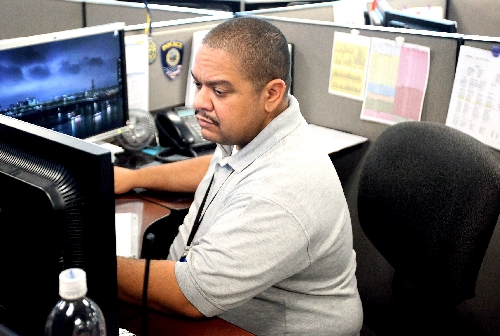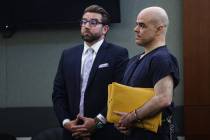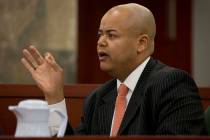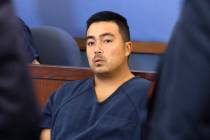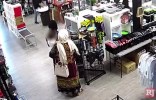Fusion center helps police with school violence prevention
When a Baltimore teenager fired on classmates on the first day of school this week, officials at the Southern Nevada Counterterrorism Center were watching closely.
A school shooting thousands of miles away probably has nothing to do with Las Vegas or terrorism. But the cops at the local fusion center have to be sure.
"We can't accept that it's an isolated event," said Patrick Baldwin, a manager at the fusion center at Metropolitan Police Department headquarters in downtown Las Vegas. "We must investigate whether it's a coordinated effort and right away push out advisories and notify the command staff."
Tracking school violence has been an emphasis at the fusion center the past four years. Baldwin said he remembered well the day that sparked the changes.
On Feb. 15, 2008, Palo Verde High School freshman Christopher Privett, 15, was gunned down by another teen in a drive-by shooting as he walked home from school.
In the weeks after the shooting, Sheriff Doug Gillespie made it clear that better communication was needed to prevent more shootings, Baldwin said.
Soon after the Privett shooting, an analyst from the Clark County School District joined the federal and local agencies at the fusion center under the Las Vegas police school violence initiative.
Fusion centers, developed by the federal government after the 9/11 attacks, are grounded in the idea that information flow between police agencies is key to stopping terrorism. But in Las Vegas and elsewhere, their focus has evolved into a broader "all crimes, all hazards" approach.
With monitoring national events for possible Nevada connections, officials at the Las Vegas fusion center are a one-stop shop for local agencies investigating threats at schools. An analyst staffs a watch desk 24 hours a day to coordinate calls and follow up with officers.
The threats coming into the fusion center are wide-ranging. If a student posts a threat on Facebook, a patrol officer will follow up with parents. If there are rumors of a gang fight at a football game, gang detectives could investigate.
A key advantage of the initiative is that information is centralized; in the past, officers might assume another agency was investigating, Baldwin said.
After finishing their investigation, officers must report their findings to the fusion center to determine the next step, South Central Area Command Capt. Tom Roberts said.
"The key is more for prevention than catching people in the act," Roberts said. "We want to deter it from happening."
It's hard to measure the effectiveness of a program that succeeds when bad things don't happen, but the statistics suggest the program is working. Violent crime at schools dropped 23 percent last year and has dropped 44 percent over four years.
But Baldwin knows one bad incident could change perceptions, and that's what he is working against.
"We're successful when we have no shootings," he said. "What happened in Baltimore, that's our worst nightmare."
The initiative's success has made it one of six finalists for the Center for Problem Oriented Policing Herman Goldstein Award, which recognizes police for innovative public safety problem-solving efforts.
Baldwin and Capt. John McGrath, who oversees the Northwest Area Command, will find out about the award after giving a presentation next month at a conference in Rhode Island.
When he talks about the program, Baldwin likes to recall the experience of U.S. Attorney General Eric Holder, who witnessed police prevent a gang shooting during his tour of the Las Vegas fusion center.
"During the brief time I was on site, a potential crisis was identified and averted," Holder said in a 2010 speech. "Most importantly, they were able to protect and likely save lives."
Baldwin said the process can always be improved, but he is thrilled with the job officers have done. Few fusion centers around the country monitor school violence, so local cops didn't have a blueprint to follow, he said.
"It's a unique position for a fusion center to be in, and we're learning as we go," Baldwin said. "We know we're on the forefront. ...We don't have anybody to look at and tell us how to do it. We're the ones who are cutting through the ice first."
Contact reporter Mike Blasky at mblasky@reviewjournal.com or 702-383-0283.




